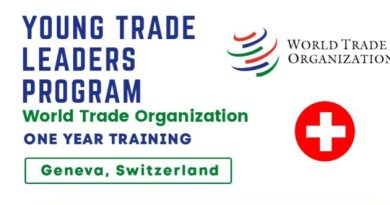4 Innovative Solutions to Keep Your Business Productive and Flexible
Over the past few years, the workplace has radically transformed. Amid the pandemic, companies and employees alike unlocked new benefits, such as the ability for teams to collaborate across borders and reach new levels of flexibility.
Leaders have long championed productivity and team collaboration. Yet the measures to track efficiency and, more important, the tools used to encourage collaborative behavior have vastly changed.
To truly reap the rewards of remote work, leaders must ensure the right tools are in place to empower teams to reach their full potential.
Challenged by economic uncertainty and retention fears, employers must capitalize on this next phase of workplace transformation. A new report by Coda, the all-in-one-doc maker, reinforces the critical need for companies to build a culture that aligns with workers’ unique preferences.
To learn more, I connected with Shishir Mehrotra, co-founder and CEO of Coda, on how leaders can strike the right balance between flexibility and productivity in 2023.
1. Take a Pulse of Work Preferences Across Generations
Companies have been forced to innovate and digitize at an unprecedented pace, but employees haven’t forgotten the value of face-to-face interactions.
Coda indicates that 80 percent of respondents prefer to brainstorm in meetings, with live communication the most favored medium across all ages.
“It’s important to remember that, despite workplace flexibility, the role of offices and human connection still matters,” said Mehrotra.
With five generations converging to make up our workforce, leaders may struggle to adapt their leadership style to align with each cohort’s needs and desires.
“People value their choice of workspace. The more company rituals can be adapted to reflect those choices, the more inclusive the culture will be and the higher employee satisfaction you’ll have,” stated Mehrotra.
2. Ask “If We’re So Busy, Why Aren’t We Getting Anything Done?”
With endless meetings and incessant emails, companies have mastered the art of unnecessary interactions. And still leaders pose the question “Why aren’t teams getting anything done?”
When business objectives aren’t being met, managers are quick to schedule more meetings. However, 54 percent of workers prefer white space in between meetings to reach a state of distraction-free concentration.
This is especially true during mornings, as more than two-thirds describe themselves as “morning people” when it comes to productivity.
“In many cases, teams can reach consensus without needing a meeting,” said Mehrotra.
By adopting rituals like asynchronous communication that cater to employees’ penchants, leaders can empower teams to achieve maximum success.
3. Acknowledge That Task Management Is Not One-Size-Fits-All
Email inbox overload is a major roadblock to overcoming the proverbial productivity hump. Despite companies’ best efforts to streamline workflows, 84 percent of workers have many emails in their inboxes on a regular basis.
Today’s workers are faced with overwhelming workloads, resulting in burnout and lower performance. According to iCIMS, two in five workers report poor work-life balance and 27 percent are “more stressed,” in part because of mounting responsibilities.
Leaders must understand task management is not one-size-fits-all. For example, 56 percent of workers edit an existing to-do list each day, while 22 percent forgo a to-do list altogether.
4. Avoid Productivity Paranoia
There is a growing disconnect in the way that leaders and employees perceive workplace productivity and this fundamental misalignment can create friction and a culture of distrust.
“Focusing on face time rewards performative behaviors. Instead, leaders should trust their employees and focus on output,” warned Mehrotra.
According to Coda, 41 percent of respondents say they’re more productive than their co-workers and this perception remains regardless of work arrangements.
Face time is not indicative of quality performance. Having the right rituals in place to support teams is a more powerful driver of long-term success.
With so many workers retreating from their jobs, there is no better time to revamp workplace rituals than now. Leaders must be ready to adapt to this highly unpredictable new world of work.
Source: Incafrica.com
Cc: Marcel Schwantes




